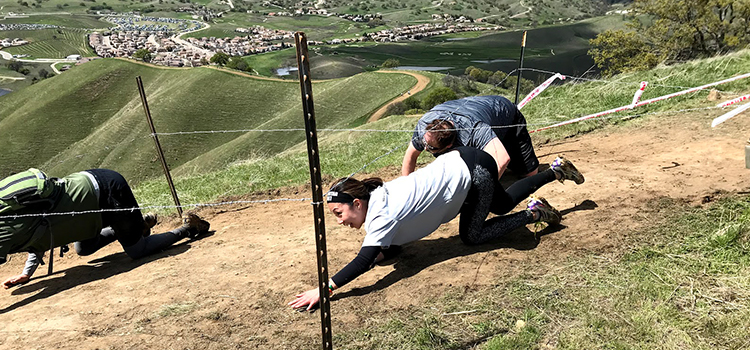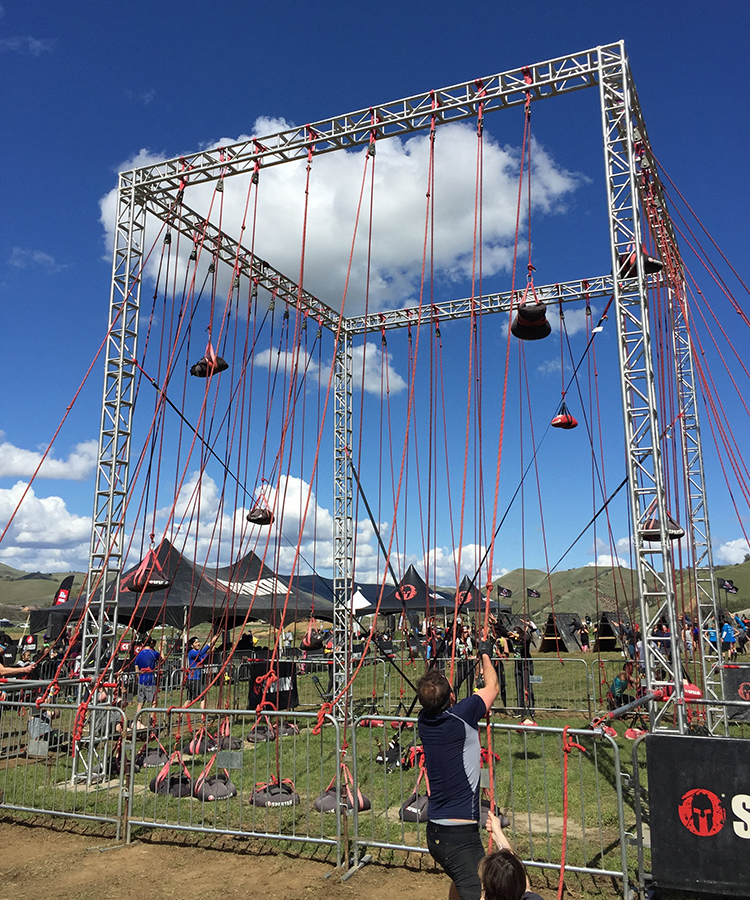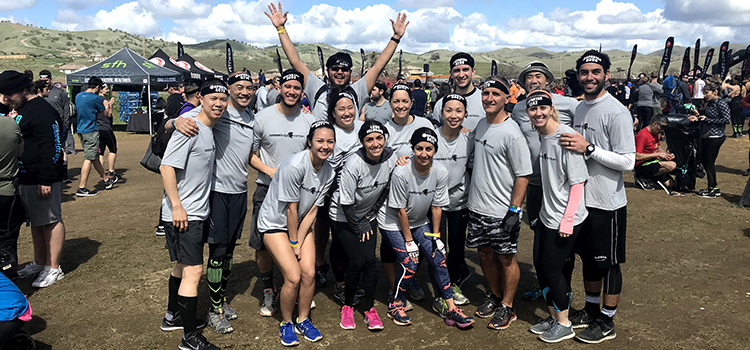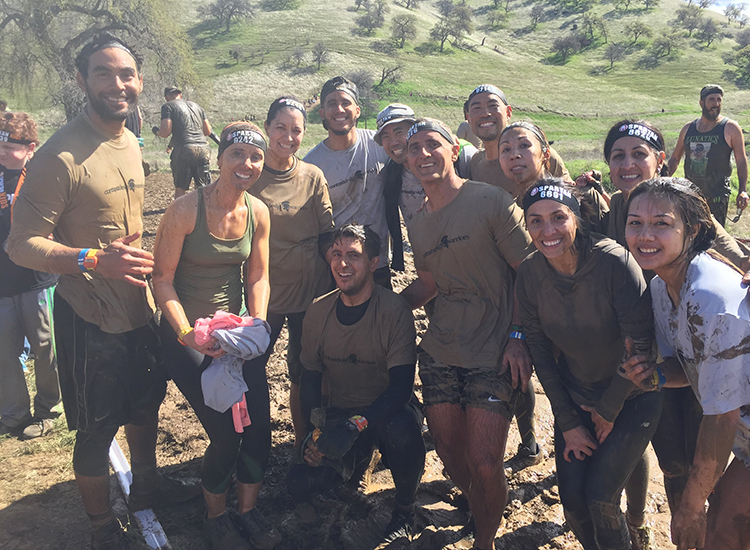We all look for a good excuse to get back in shape. Some of us like to wait until the New Year, while others wait for a divine sign to stop being lazy. For me, it was the commitment—joining a group of my colleagues at Contrast—to sign up for the Spartan Race in Diablo Grande this March. While I was studying in the University of Central Florida, my anatomy professor once made a point about people who talk the talk and those who walk the walk. He shared his experience of signing up for half-marathons and what it took for him to get committed: share the news. Once he started talking about it to friends and family, it kept him accountable and it became a reality that he knew he had to prepare for.
So that’s what I did: I signed up for the race and told everyone I knew about it. It’s now expected of me to participate and I expect myself to do great. It took me a couple of weeks and watching several videos of the actual race to realize, “this is harder than I thought.” But I like a good challenge, so my plan was to break up my training into two phases: 1) cardiovascular fitness and 2) physical fitness.
Although I have always tried to stay physically fit, I knew that my cardiovascular fitness was at an all-time low. (Now that I reflect on it, I have not finished a one-mile run since my high school soccer days.) I quickly realized that this wouldn’t be an easy task and that it would take a lot of effort to compete at the level I want. And so I began my training.
Phase #1: Cardiovascular Training
My goal was simple: to be able to run the length of the race (3+ miles) non-stop by the time of the race. This was a reality that I have never been able to reach, so I had to break it down into smaller, achievable goals:
Week 1–2: Complete a 1-mile run under 10 minutes.
Week 3–4: Complete a 1-mile run under 8 minutes.
Week 5: Complete a 1-mile run under 7 minutes.
Week 6–7: Complete a 2-mile run.
Week 8–9: Complete a 2-mile run under 20 minutes.
Week 10: Intervals of 1–2 mile runs daily to maintain.
On paper this looks easy: just run faster every week. But let’s be real—it was going to take a lot of effort and commitment. Since I was mostly running indoors at a treadmill, I purchased a little notebook to track all my running times. (I’m very old school when it comes down to those things.)
Phase #2: Physical Training
Before I could train my body, I needed to understand what it was that I was training for. I started to search YouTube for examples of the obstacle course and stumbled upon this video. It was a real eye-opener. I now understood that simple pushups and burpees were not going to cut it—I had to get my body ready to endure my toughest challenge to date.
This training was going to be all about body weight exercise like pullups, rope climbing, flipping tires, and other exercises designed to decrease my fatigue.
Day 1: Upper Body Power
Day 2: Lower Body Power
Day 3: Rest
Day 4: Lower Body Hypertrophy
Day 5: Chest and Arms Hypertrophy
Day 6 & 7: Rest
Day 1
| Pulling Power Movement (ex. Bent over rows) | 3 sets of 3–5 reps |
| Auxiliary Pulling Movement (ex. Pull-ups) | 2 sets of 6–10 reps |
| Assistance pressing movement (ex. Dips) | 2 sets of 6–10 reps |
| Assistance pressing movement (ex. Barbell shoulder press) | 3 sets of 6–10 reps |
| Auxiliary curling movement (ex. Z-bar curls) | 3 sets of 6–10 reps |
| Auxiliary extension movement (ex. Skull crushers) | 3 sets of 6–10 reps |
Day 2
| Pressing Power Movement (ex. Squats) | 3 sets of 3–5 reps |
| Assistance extension movement (ex. Leg extension) | 2 sets of 6–10 reps |
| Assistance pulling movement (ex. Deadlifts) | 3 sets of 5–8 reps |
| Assistance pulling/curling movement (ex. Leg curls) | 2 sets of 6–10 reps |
| Calf movement (ex. Calf raise) | 2 sets of 6–10 reps |
Day 4
| Lower body power exercise (ex. Squats) | 6 sets of 3 reps |
| Hypertrophy pressing movement (ex. Leg press) | 2 sets of 12–15 reps |
| Hypertrophy extension movement (ex. Leg extensions) | 3 sets of 15–20 reps |
| Hypertrophy pulling movement (ex. Deadlifts/stiff legged deadlifts) | 2 sets of 12–15 reps |
| Calf movement | 3 sets of 15–20 reps |
Day 5
| Pressing power exercise (ex. Bench press) | 6 sets of 3 reps |
| Hypertrophy pressing movement (ex. Dumbbell press/incline press) | 3 sets of 8–12 reps |
| Fly movement (ex. Cable flyes) | 2 sets of 15–20 reps |
| Curling exercise (ex. Dumbbell curls) | 2 sets of 12–15 reps |
| Extension exercise (ex. Cable press downs) | 2 sets of 12–15 reps |
At this point I’m very excited to complete this challenge and continue 2018 on the right note.
None of this would be possible without the Contrast team, whose goals aligned with mine.
Post-race update:
Judgement day came and went like a breeze. The CDW team met at Diablo Grande to put all of our hard training to test, and the day itself was perfect. Weather was a cool 50 degrees, no wind, and little to no chance of rain at start time. There was one thing I noticed at the beginning of the race which I had not accounted for. The track itself included going up and down hills for approximately 2–3 miles, some very steep and with a very small amount of flat ground running. But there was no backing out—and our entire team was energized and ready to conquer any obstacle.
We stuck together as a team throughout the race and encouraged each other to attempt every single obstacle, no matter the difficulty. Some were easy, like a barbed wire crawl, and some much more difficult, like a rope climb on a very thin rope. But this team-building exercise proved to be a lot of fun and we all left seeing each other’s competitive side and will to complete a challenge.

Barbed wire crawl

The “Hercules Hoist”
I encourage any individuals, couples, and work teams to try this type of race at least once. It pushes you to train your body and mind to make it to the finish line. Although I have been sore for the past 2 days, I feel great that I had a chance to train and complete the Spartan race. I’m now looking forward to other obstacle races in 2018 and to continue to push my body to its limits.

Group shot of CDW team + friends before the race

Group shot of CDW team + friends after the race


